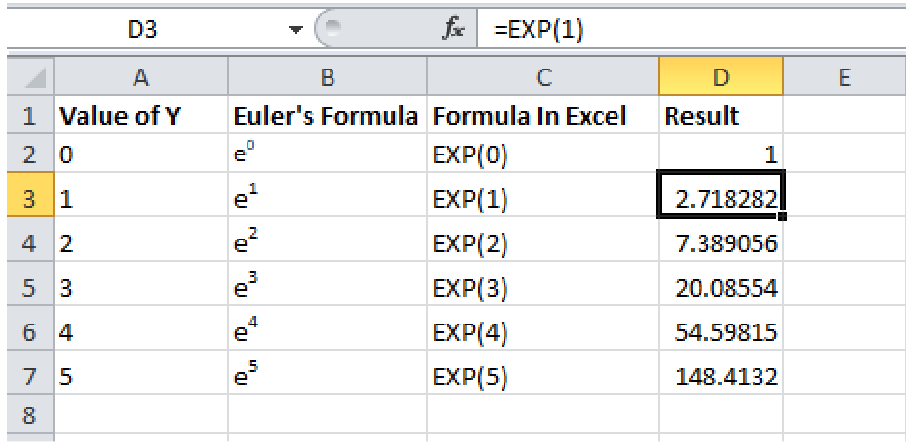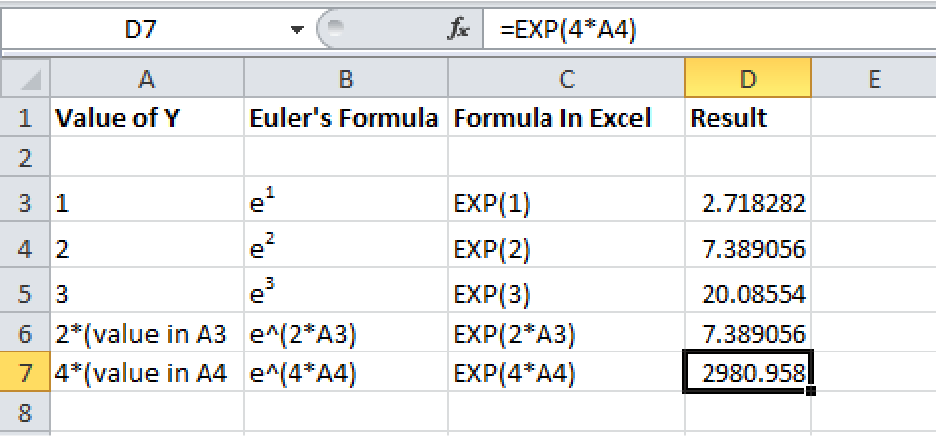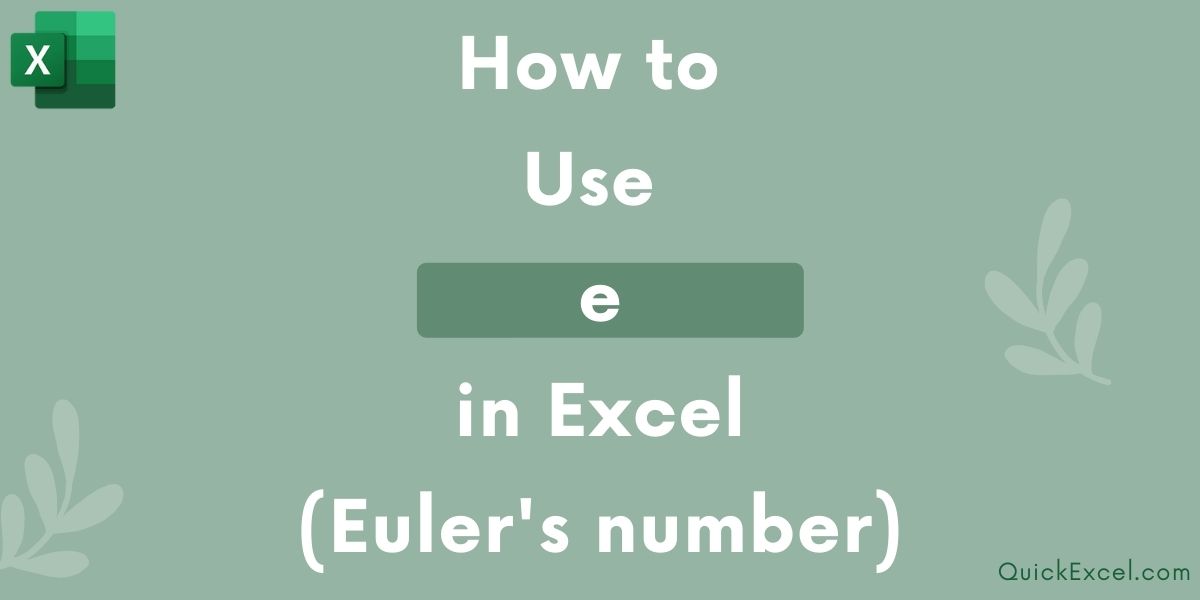In this tutorial we are going to find out about, a way to use “e” in Excel (where “e” stands for Euler’s Number)
What is e?
“e” is a commonly used base for exponential functions, invented by John Napier. Any number greater than 0 (except for 1) is often used for an exponential “e”.
The symbol, “ e” stands for Euler’s Number. Which is a fine constant that’s roughly equal to 2.7182818. It’s
an illogical number that can not be written as a simple bit.
Steps to use the EXP Function in Excel
The value of e is used in combination with a rate and a time period, frequently having the value of “e” raised to the power of some variables.
The EXP operation helps you to use the worth of “e” and lift it to any power to induce the result.
The syntax for the EXP function is relatively simple :
= EXP(value)
The EXP function returns the value of constant “e” raised to the power of the given value
For illustration, if you would like to easily get the value of “e”, you merely got to notice the worth of e1.
In different words, we need to use the formula like:

Example to use EXP function in Excel
All of this might be confusing to understand at first by looking syntactically.
For Example: If you would like to seek out the exponent of a number. An exponent of number is the number of times the
amount gets multiplied
=> 2 raised to 3 (In mathematics) = 8 => 2 ^ 3 = 8
EXP function returns variety when number 2.7128… which is e gets the facility of number n. for instance when =e * e * e = e^3 or are often extracted using the below function =EXP(3).
Let us see small exemplifications to understand how the EXP function works

The formula calculates the value of e1, this is an exceptional manner to get the value of e.
In the above sample image, the second, third, fourth and, fifth formulae calculate the values e2, e3, e4, and, e5 respectively. As such, you’ll be able to realize the value or result of “e” raised to any power with this means.
Also, indeed if you want to find the value of “e” raised to a more complex formula, for illustration, 2y+5, you simply need to class = EXP(2y+5). This will give the same value as e2y+5.

The fourth and fifth formula shows that you simply also can use formulas and perform at intervals the EXP function. For instance, you’ll be able to realize the worth of e2ybz victimization the formula: =EXP(2*y), where y is any range or a relation to a cell containing variety.
Conclusion
That’s it for this tutorial, hope you have understood the utilization of the EXP function and the value of Euler’s range and perform calculations that involve the constant. Stay tuned to Quick Excel for more such tutorials on Excel.
